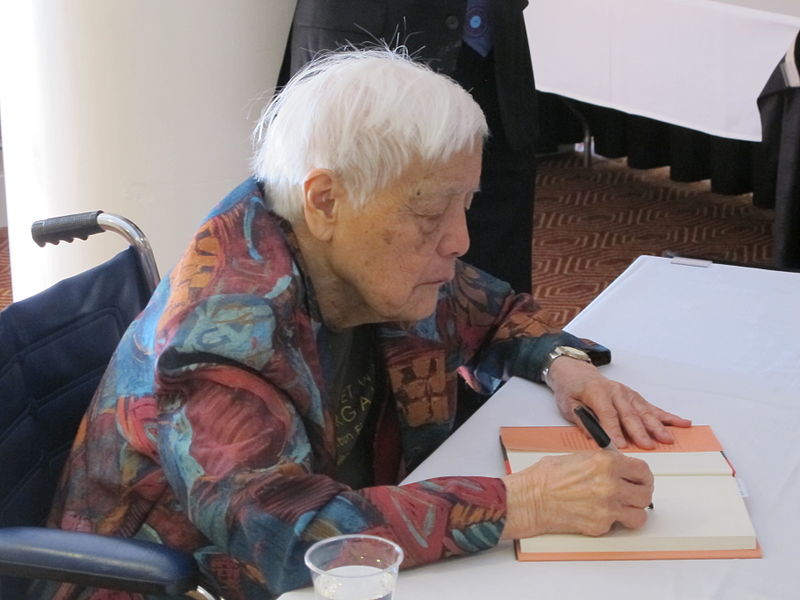Credit: Gary Stevens
What can you do when what you look like interferes with your career? If you are Grace Lee Boggs, you become part of the social movements of the 20th century, and you think about how much will still need to be done in the 21st. If you are Boggs, you refuse to buy into the racial categories of the dominant culture, and you create a space for all to gather and work for justice. For these reasons, Boggs is considered a hero of the Asian- and African-American communities.
Grace Lee Boggs was born to immigrant parents from China in 1915 in Providence, Rhode Island. Her mother, Yin Lan, had been sold into slavery by her uncle but escaped and later was able to marry Chin Lee and move to the United States.
Boggs was an excellent student; through a scholarship she earned a bachelor’s degree from Barnard College in 1935 and just five years later a Ph.D. in philosophy from Bryn Mawr College. However, her gender and her race proved daunting obstacles, and she had to take a job at the University of Chicago Philosophy Library for much less salary than a faculty member’s. It was here that she began her lifetime of activism.
In 2014, PBS aired an award-winning documentary about her life entitled “American Revolutionary: The Evolution of Grace Lee Boggs,” which reflected on the changes in her activism over the years. At first she embraced the economic message and the academic challenges of defending Marxist approaches. She and her husband, James Boggs, were part of the Correspondence Publishing Committee, a radical leftist organization that promoted Hegelian, not Leninist, theories.
Then she became part of the Black Power Movement, first embracing the approach of Malcolm X and even trying to get him to run for federal office. The violence of the Detroit Rebellion of 1967 made Boggs rethink her associations and assumptions again. It wasn’t that she gave up on revolution – she found different approaches depending on her experiences, observations, and understanding of history and philosophy.
Boggs was inspired by Martin Luther King, Jr., the modern Women’s movement, and even the ecological movement to look beyond protests and office holding. She and her husband developed a multicultural form of activism that focused on community action and collective identity. Revolution became evolution, with change only possible from within a culture by people who realized that they were part of the problem as well as the solution. Empowering the individual might make more lasting changes. Education, Boggs understood, was a necessary area for any social mobility or change. As part of their focus on community, the Boggs created the multiracial and intergenerational collective called Detroit Summer in 1992, a year before her husband died. The collective is celebrating its 25th birthday this year.
By permission from the Boggs Center
Much of this activism Boggs did with her husband. The couple married in 1953, and their biracial marriage would have been shocking at the time. Both were activists in their own right, but together they were a remarkable team. Their work inspired others to create the James and Grace Lee Boggs Center to Nurture Community Leadership in 1995. Again, in 2013, The James & Grace Lee Boggs School was formed by others using the Boggs’ ideas of community and focus on education. Both organizations are still active today in Detroit, Michigan, where Boggs lived for several decades.
Boggs’ final book, The Next American Revolution: Sustainable Activism for the Twenty-First Century, came out in 2011. She gave lectures and interviews into 2014 before going into hospice care. She died later that year on October 5 at the age of 100. It took time, but Boggs’ realization that change is slow and requires constant work could be a lesson for us to learn today.


